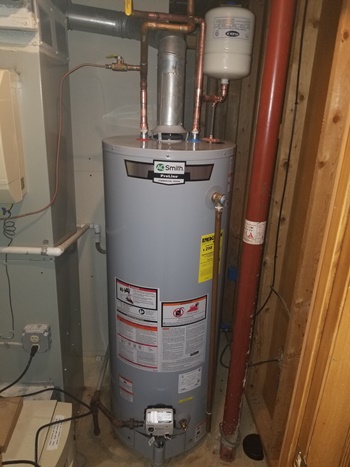Making Sure Durability of Your Home's Hot Water System: Care AdviceEasy Guide to Maintaining Your Home's Hot Water System
Making Sure Durability of Your Home's Hot Water System: Care AdviceEasy Guide to Maintaining Your Home's Hot Water System
Blog Article
This great article below relating to Tips For Maintaining Your Hot Water Heater is fairly enlightening. Read it for your own benefit and decide what you think of it.

Hot water is necessary for daily comfort, whether it's for a revitalizing shower or washing meals. To guarantee your hot water system runs effectively and lasts much longer, regular maintenance is crucial. This write-up gives useful ideas and insights on exactly how to keep your home's hot water system to prevent disturbances and costly repair work.
Intro
Maintaining your home's hot water system may appear overwhelming, yet with a few basic actions, you can guarantee it runs efficiently for years to find. This overview covers every little thing from understanding your hot water system to do it yourself upkeep tips and knowing when to contact specialist aid.
Importance of Maintaining Your Hot Water System
Routine upkeep not just expands the lifespan of your hot water system but likewise guarantees it runs successfully. Disregarding maintenance can lead to reduced effectiveness, greater power costs, and also early failing of the system.
Indicators Your Warm Water System Needs Maintenance
Knowing when your hot water system needs attention can avoid major problems. Watch out for indications such as irregular water temperature level, odd sounds from the heating system, or corroded water.
Recognizing Your Warm Water System
Prior to diving right into upkeep tasks, it's valuable to comprehend the fundamental elements of your hot water system. Typically, this consists of the hot water heater itself, pipelines, anode rods, and temperature controls.
Regular Monthly Upkeep Tasks
Normal month-to-month checks can aid capture small problems before they escalate.
Flushing the Water Heater
Purging your hot water heater gets rid of sediment build-up, boosting performance and extending its life.
Checking and Replacing Anode Rods
Anode rods prevent deterioration inside the container. Checking and replacing them when worn out is crucial.
Inspecting and Changing Temperature Settings
Readjusting the temperature level settings guarantees optimal efficiency and safety and security.
DIY Tips for Maintenance
You can execute numerous maintenance tasks on your own to maintain your hot water system in leading problem.
Checking for Leaks
Consistently inspect pipelines and links for leaks, as these can lead to water damages and higher costs.
Evaluating Pressure Alleviation Valves
Evaluating the pressure safety valve ensures it operates properly and avoids too much pressure build-up.
Protecting Pipes
Shielding hot water pipelines minimizes heat loss and can conserve power.
When to Call a Specialist
While do it yourself maintenance is valuable, some problems require specialist competence.
Complex Concerns Requiring Specialist Assistance
Instances include significant leaks, electric issues, or if your hot water heater is regularly underperforming.
Regular Expert Upkeep Perks
Professional maintenance can consist of extensive inspections, tune-ups, and guaranteeing compliance with safety and security standards.
Final thought
Regular maintenance of your home's warm water system is important for performance, longevity, and expense financial savings. By complying with these ideas and recognizing when to seek expert aid, you can ensure a reputable supply of warm water without unexpected interruptions.
How to Maintain an Instant Hot Water Heater
Before tinkering with your hot water heater, make sure that it’s not powered on. You also have to turn off the main circuit breaker and shut off the main gas line to prevent accidents. Also turn off the water valves connected to your unit to prevent water from flowing into and out of the appliance. 2. When you’re done, you have to detach the purge valves’ caps. These look like the letter “T” and are situated on either side of the water valves. Doing so will release any pressure that has accumulated inside the valves while at the same time avoid hot water from shooting out and burning your skin. 3. When the purge valves’ caps are removed, you have to connect your hosing lines to the valves. Your unit should have come with three hoses but if it didn’t, you can purchase these things from any hardware or home repair shops. You can also get them from retail stores that sell water heating systems. Read the user’s manual and follow it to complete this task properly. When the hosing lines are connected, open the purge port’s valves. 4. You should never use harsh chemical cleaners or solutions when cleaning your unit. Make use of white vinegar instead. It should be undiluted and you’ll probably use about 2 gallons. 5. Now flush your water heater. This task should probably take about 40 minutes. We can’t give you specific directions for this because the procedure is carried out depending on the type, model and brand of your heater. With that being said, refer to the user’s manual. 6. When you’re done draining the unit, you have to turn off the purge port valves again. Remove the hosing lines that you earlier installed on each of the water valves. Put the valve caps (purge port) back in their respective places and be very careful so as not to damage the rubber discs that are found inside these caps. 7. Now that everything’s back in place, check your user’s manual again to find out how to reactivate your water heating system. 8. Once it is working, turn one of your hot water faucets on just to let air pass through the heater’s water supply pipes. Leave the tap on until water flows smoothly out of it. https://www.orrplumbing.com/blog/2014/september/how-to-maintain-an-instant-hot-water-heater/

Hopefully you liked our section on Water Heater Maintenance Tips You Can't Afford to Forget. Thanks for taking a few minutes to read our piece. Sharing is good. Helping others is fun. We value your readership.
Click Here Report this page